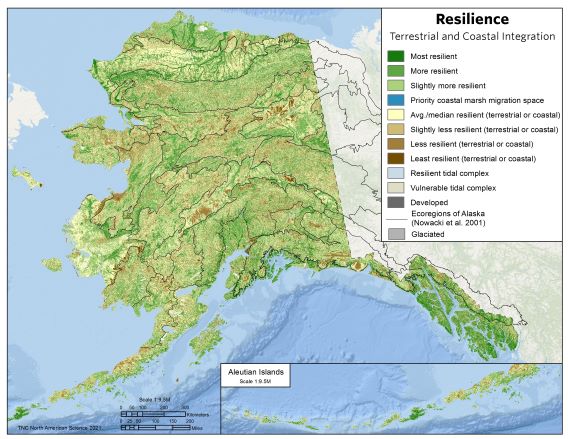Resilience concerns the ability of a living system to adjust to climate change, moderate potential damages, take advantage of opportunities, or cope with consequences; in short, the capacity to adapt. The Nature Conservancy’s resilience analysis develops an approach to conserve biological diversity while allowing species and communities to rearrange in response to a continually changing climate.
Scientists and conservation planners analyzed 425.5 million acres of land in Alaska for resilience. The study area includes thirty-two TNC ecoregions. Scientists considered individual landscapes such as tundra, boreal forests, coastal rainforests, rivers and lakes, wetlands and mountain ranges as collections of neighborhoods where plants and animals reside. Areas with the most complex neighborhoods in terms of topography and wetland density were estimated to offer the greatest potential for plant and animal species to “move down the block” and find new homes as climate change alters their traditional neighborhoods. The resilience study also considered the permeability of landscapes, analyzing where roads, development, oil and gas mining, or other fragmenting features create barriers that prevent plants and animals from moving into new neighborhoods.
An analysis focused on the coastal resilience of Alaska was also done to examine habitat's response to sea level rise.

